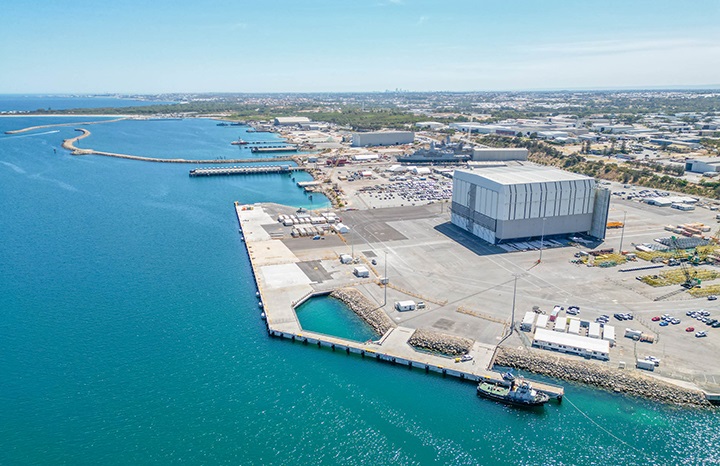The Part 11B application process is a refined version of the temporary Part 17 pathway which incorporates its strengths, such as the pre-lodgement and coordinated State agency referral processes – and streamlines it for a post-COVID environment. The temporary Part 17 pathway closed to new applications on 29 December 2023. For more information visit the Part 17 Significant Development Pathway page.
All Part 11B applications will be coordinated by the State Development Assessment Unit (SDAU) within the Department of Planning, Lands and Heritage (Department). The pathway will have access to the new State Referral Coordination Unit (SRCU), which will collaborate with referral agencies to consider proposals strategically from a State-wide perspective. The SRCU will manage stakeholder inputs and provide a single, coordinated whole-of-government response on applications. This will lead to proactive case management of referrals to State agencies and local governments and ensure timely determination of proposals.
Eligibility
The Part 11B pathway is open to developments valued at:
- $20 million or more for proposals either wholly or partly in the Perth or Peel region scheme or Swan Valley Planning Scheme areas
- $5 million or more in other parts of the State
Projects that do not meet the value threshold but raise issues of State or regional importance can also be authorised for entry into the pathway by the Premier, on the recommendation of the Minister for Planning.
See the FAQs section on this page for more information about eligibility.
While any development that meets the value threshold can be assessed through the Part 11B pathway, applications that are likely to benefit most are those that:
- present issues of State or regional importance
- involve referral to multiple State Government agencies and would be assisted by coordination, and/or
- align with State Government policies and priorities but are restricted by an out-of-date local planning framework
Part 11B applications are generally determined by the Statutory Planning Committee (SPC), a committee of the Western Australian Planning Commission (WAPC).
SPC Agendas and Minutes
Contact
The SDAU can be contacted:
by email: [email protected]
or telephone: (08) 6551 9450
Application process
The application assessment process is set out in Part 11B of the Planning and Development Act 2005 (PD Act), the Planning and Development (Significant Development) Regulations 2024 (Regulations) and the Part 11B Significant Development Pathway Application Guide (Application Guide), and is generally as follows:
Mandatory Pre-lodgement consultation with the WAPC
Proponent approaches WAPC > Where required, WAPC requests appropriate design review be undertaken > Options for the flexible pre-lodgement process can be scaled to suit the proposal and proponent’s desired level of certainty > Options include: A high-level pre-lodgement meeting; Request for detailed written pre-lodgement advice; Tailored process developed in collaboration with the applicant > The pre-lodgement meeting and advice request have no compulsory submission requirements, but the quality and detail of advice provided will be relative to the level of information submitted > Pre-lodgement advice request can be forwarded to State agencies for a coordinated response on applicant request.

Lodgement – Form 11B-1
A completed Significant Development Form 11B-1 is lodged along with other required supporting information through the Planning Online portal > The assessment and 120-day determination timeframe commence once all required information has been submitted and the application fee paid.

Part 11B Application Assessment
Proposal assessed by Department and referred to local government for 60 days and the SRCU > Assessment may involve design review depending on the nature of the proposal and extent to which matters were addressed during pre-lodgement > Public consultation is undertaken on all applications, for at least 28 days > All applications are referred to the Minister for Planning for comment > Additional information may be sought during assessment if required > SDAU prepares a report based on all feedback and provides a recommendation to the SPC.

Determination by Statutory Planning Committee
Part 11B applications generally determined by SPC > Meeting agenda published with SDAU’s recommendation at least seven days before meeting > Meetings are open to members of the public who can request to make a presentation (deputation) along with other stakeholders, including the applicant > Minutes are published online within 14 days of the meeting, and the applicant, local government, referral agencies and submitters are notified of the outcome.

Amendments – Form 11B-2
Proponents can apply to amend an approved development, including an extension to the substantial commencement period > Amendment applications may be referred to State agencies, local government and the Minister for Planning > Public consultation may be required depending on the nature and scale of the amendment > Applications are determined by the SPC, or under delegated authority by the WAPC Chairperson or Department officers.

Clearance of Conditions
Proponents first liaise with State agencies or the local government for advice on relevant approval conditions > Proponents submit to SDAU a Clearance of Conditions matrix and documentation as specified in approval conditions, along with final working drawings > SDAU reviews documents to ensure they satisfy approval conditions > SDAU will generally within 30 days notify the proponent whether conditions have been satisfied > Clearances can be staged, subject to Western Australian Planning Commission (WAPC) approval.
Fees and forms
To view/download Part 11B forms, find out more about the application steps and fees, visit the following page:
Part 11B Fees and Forms





